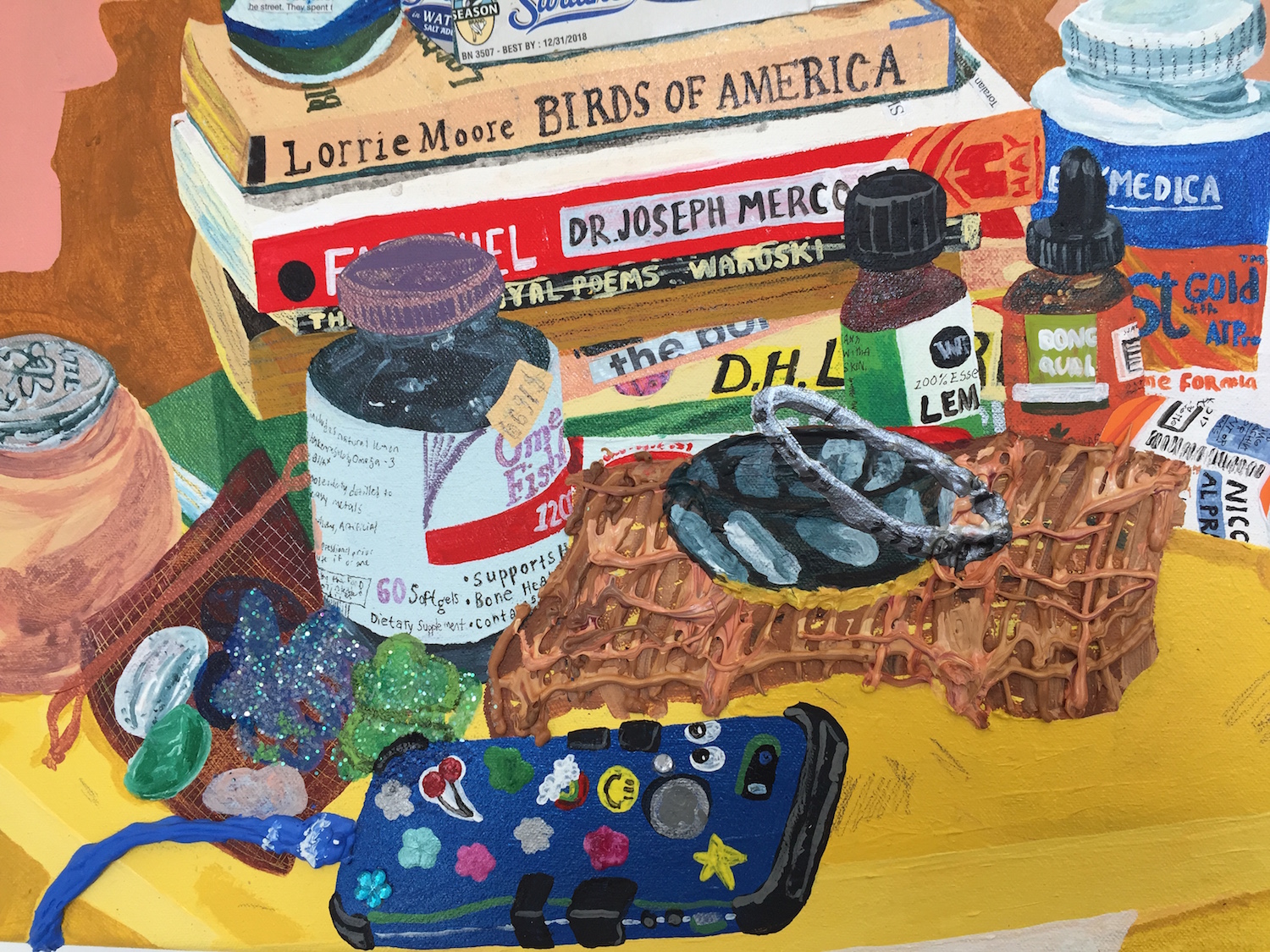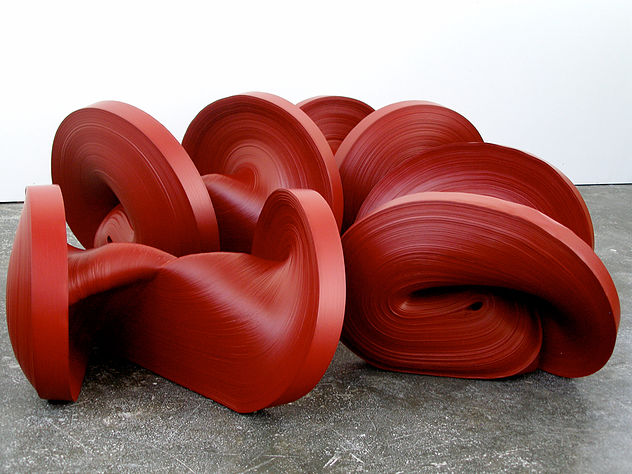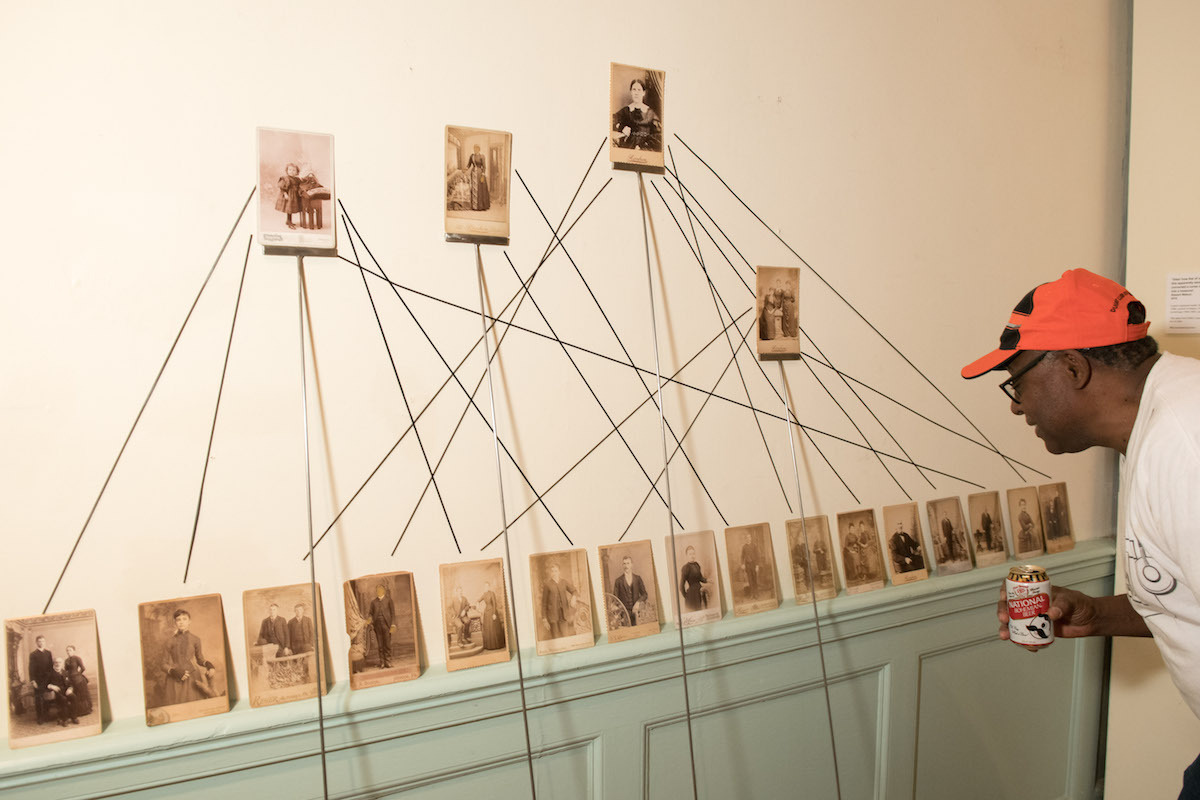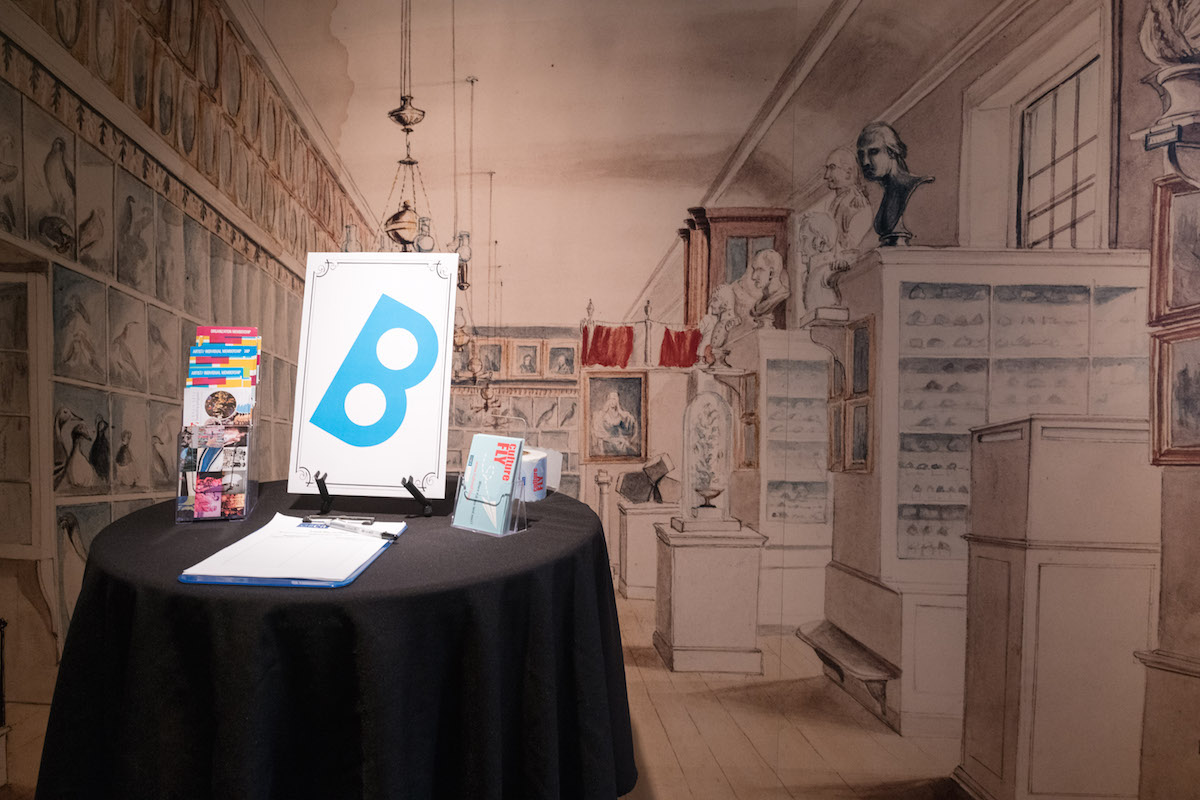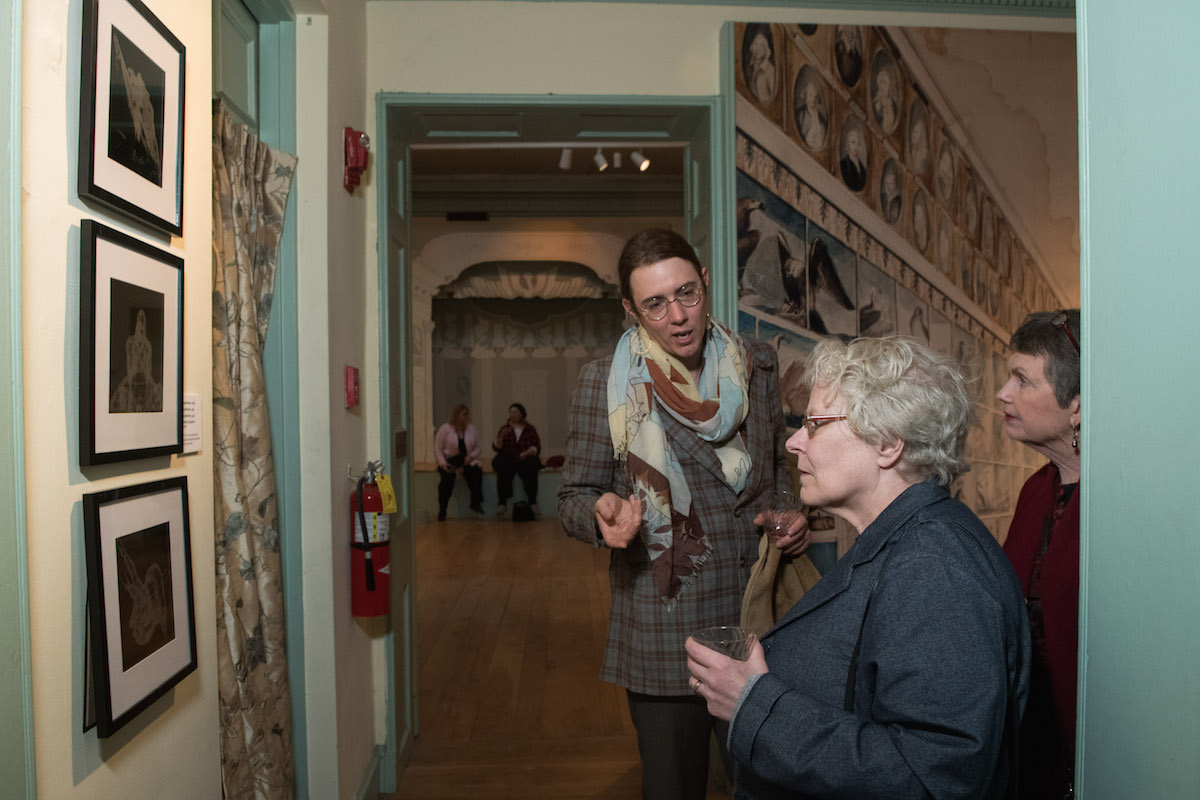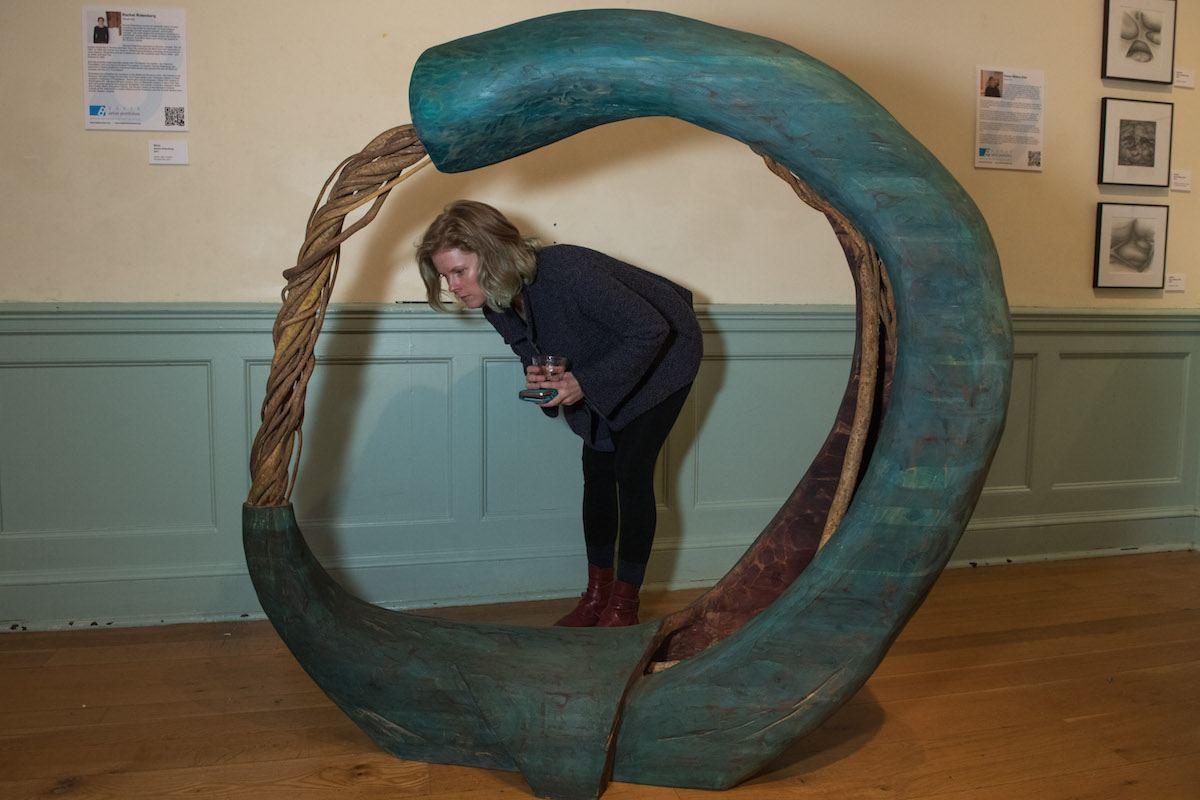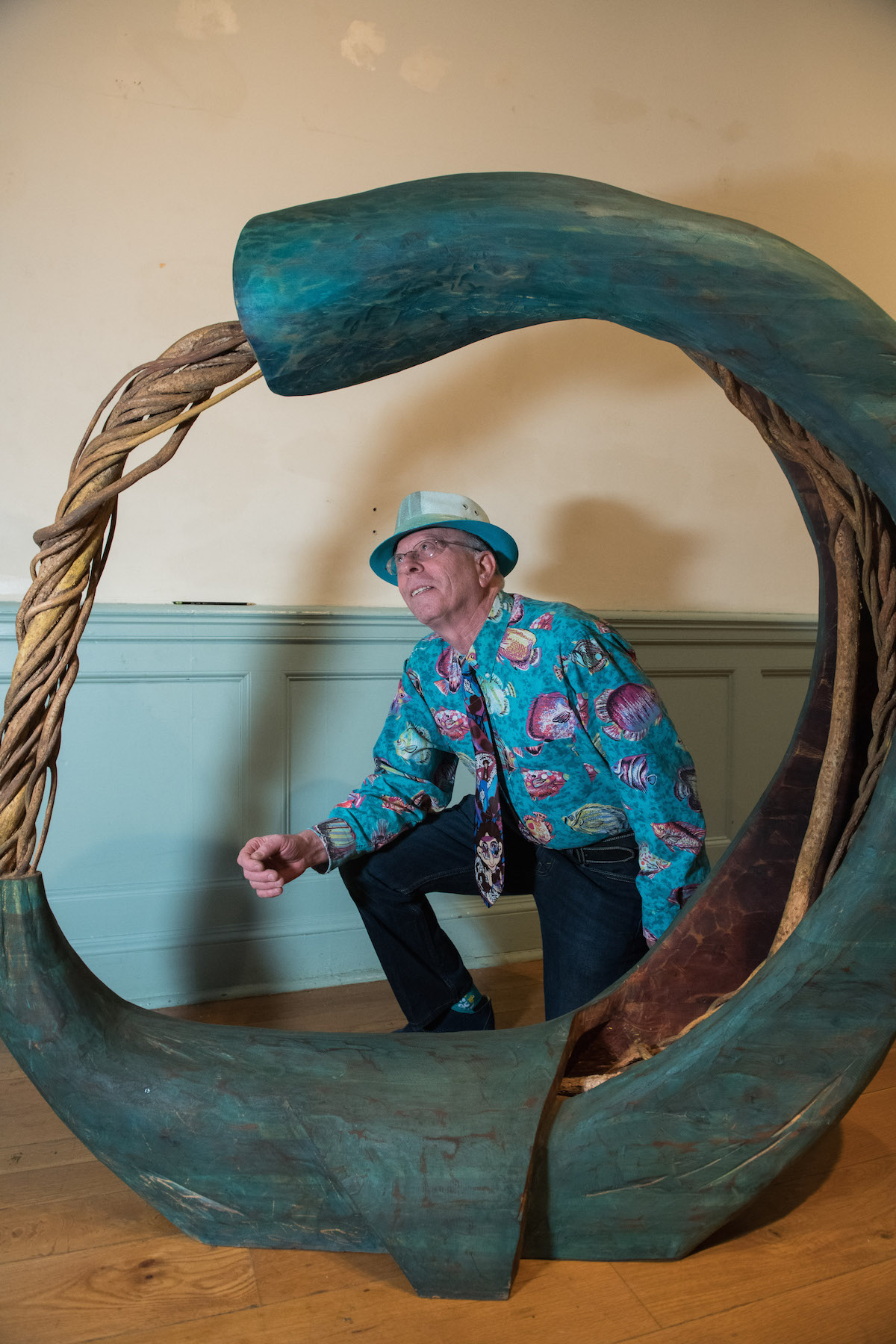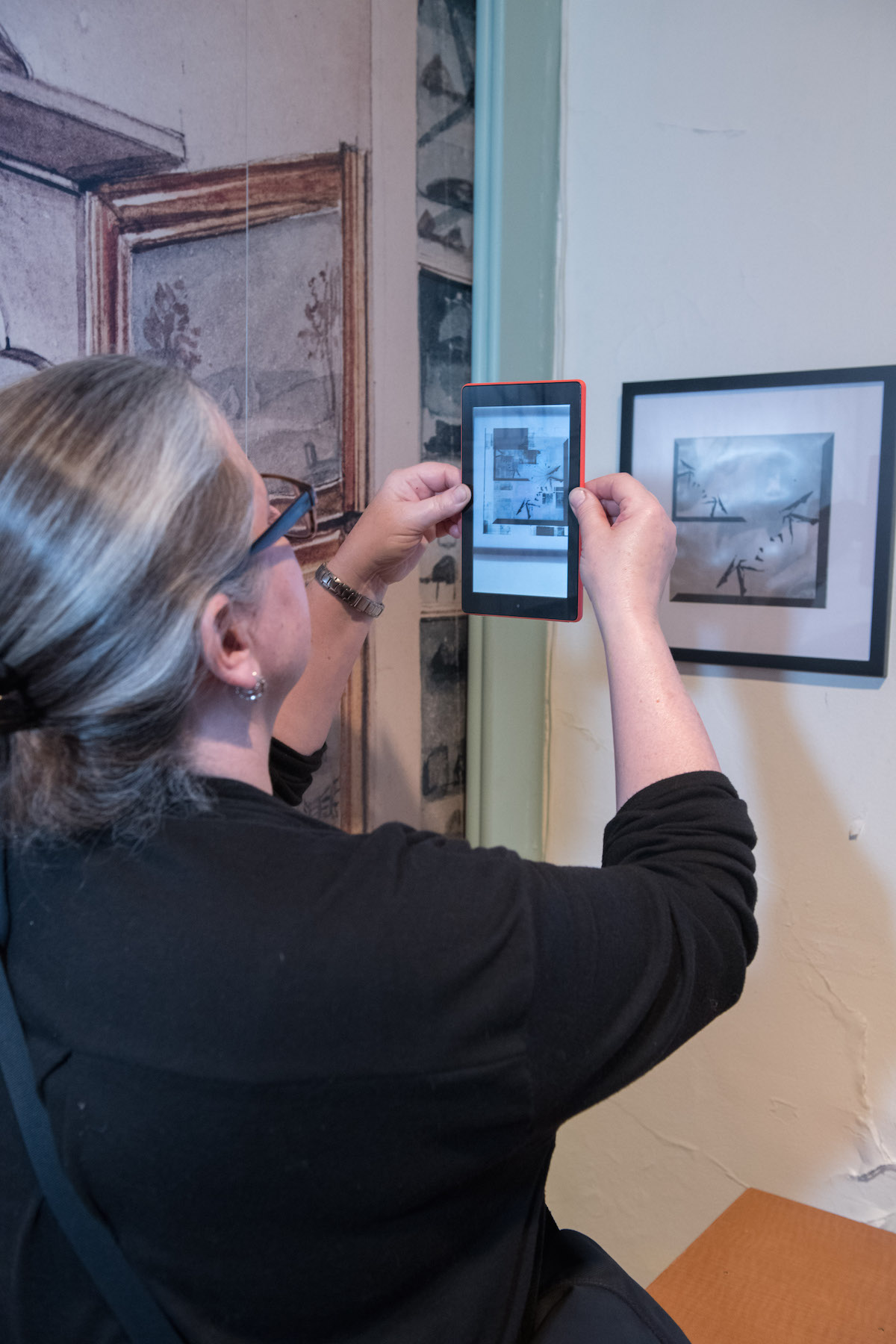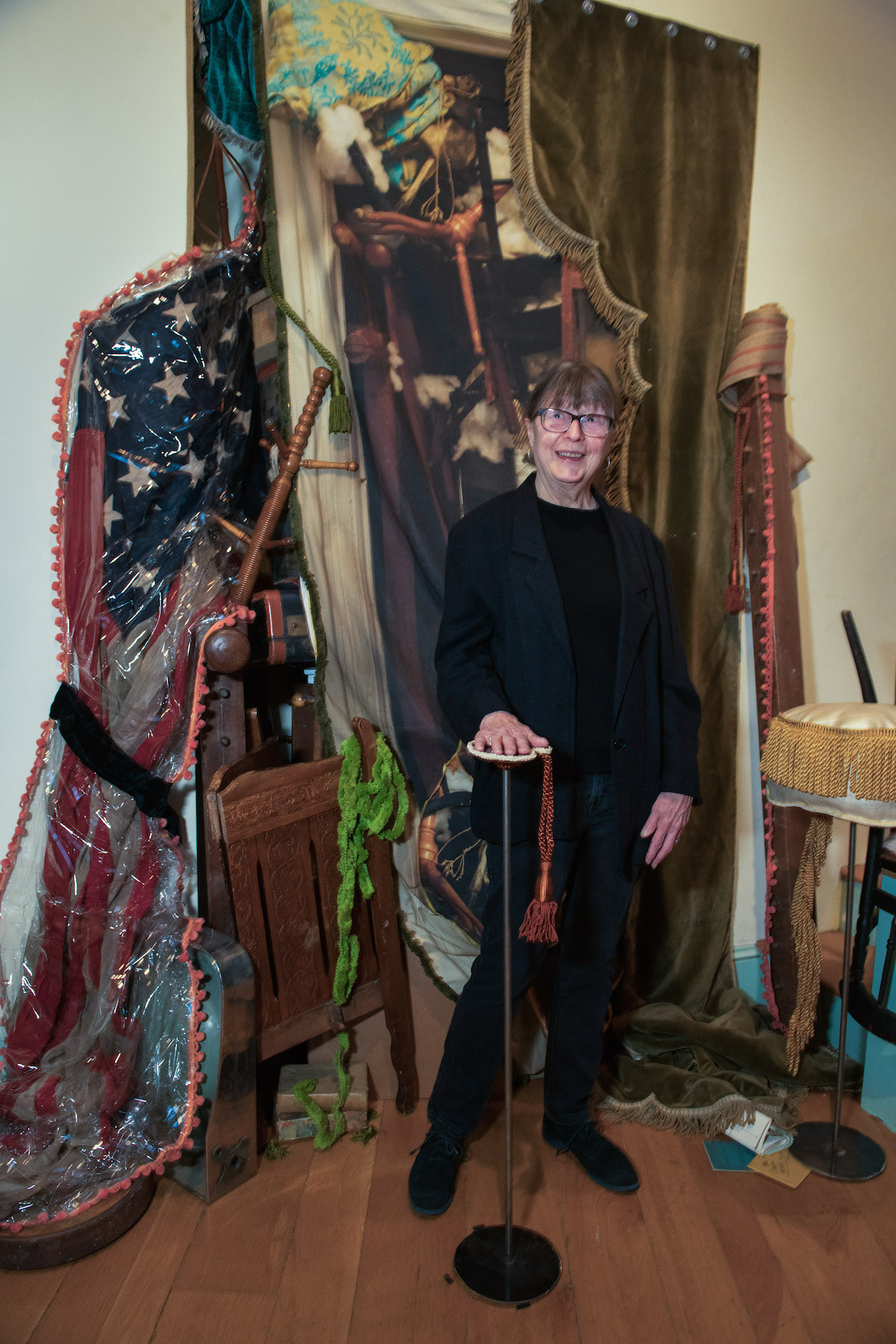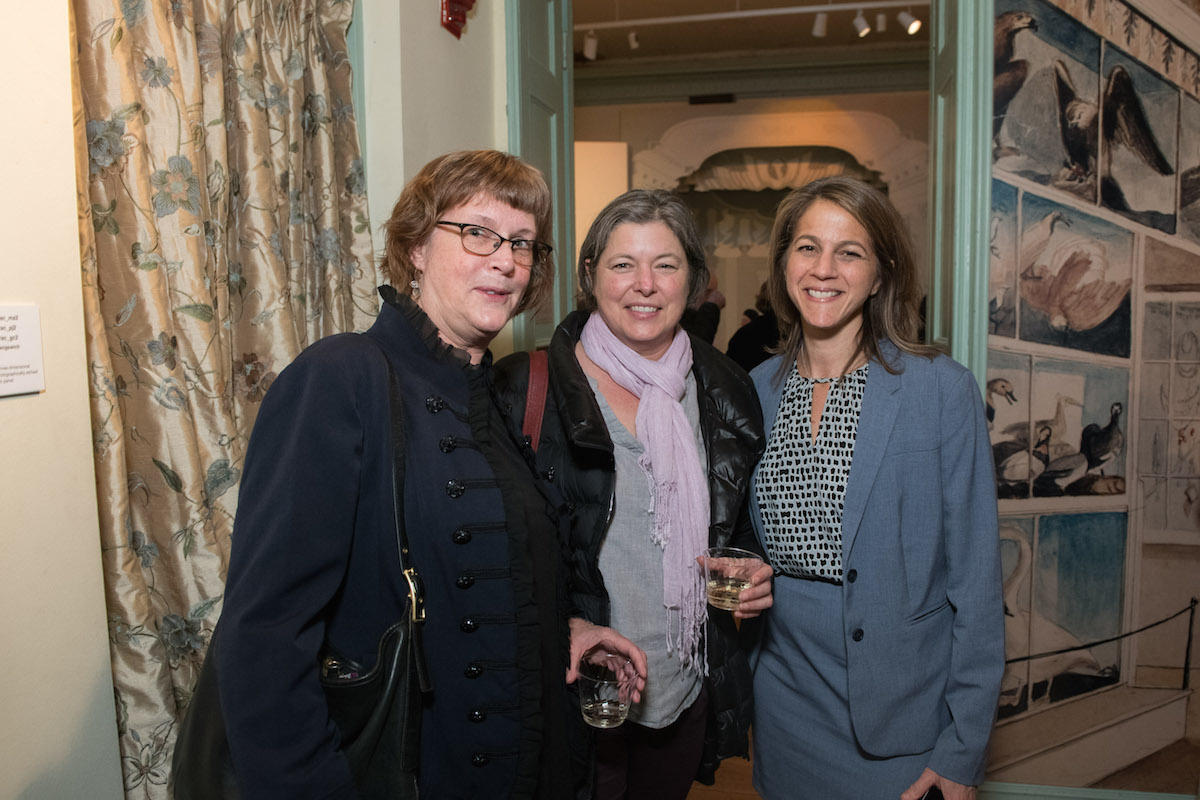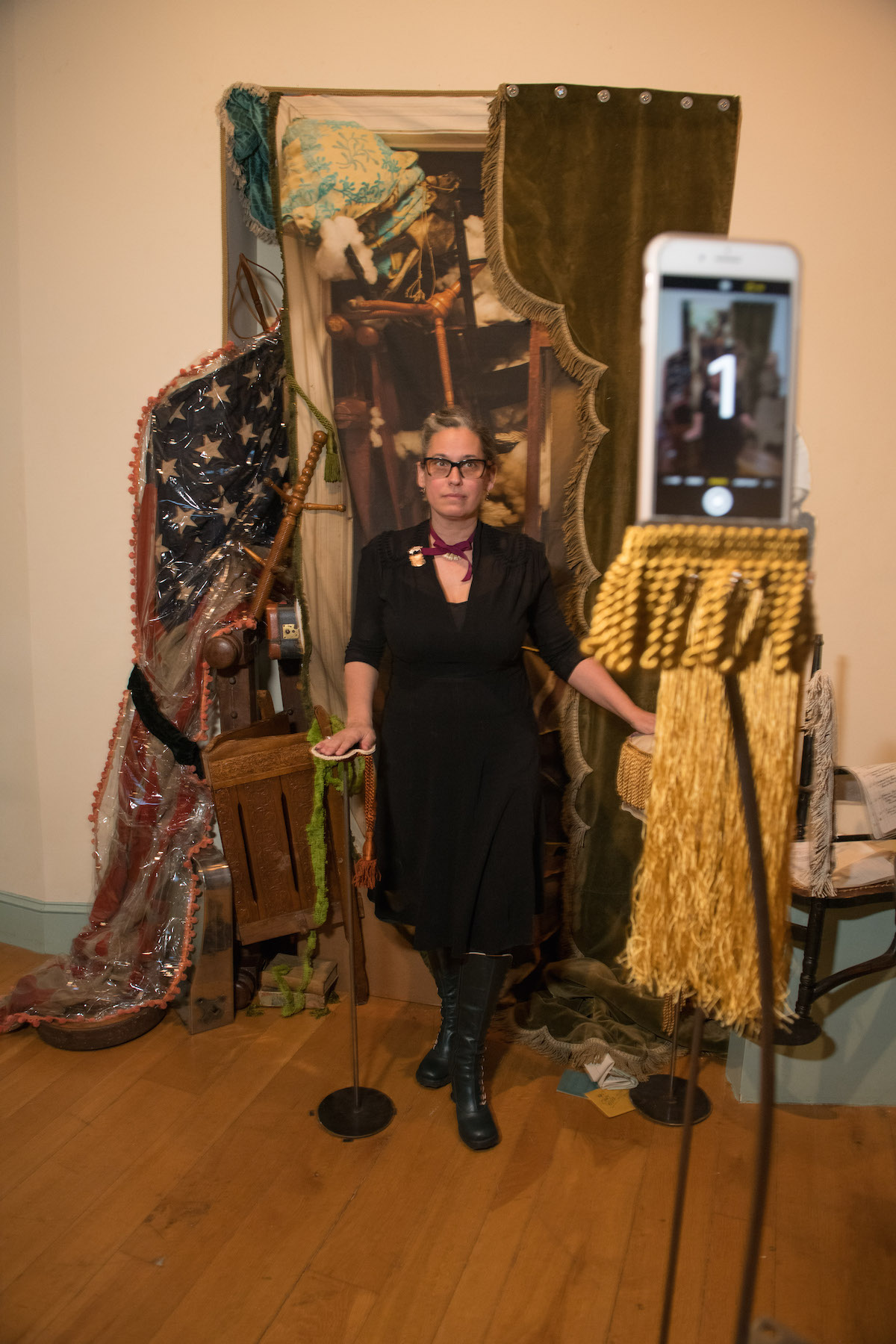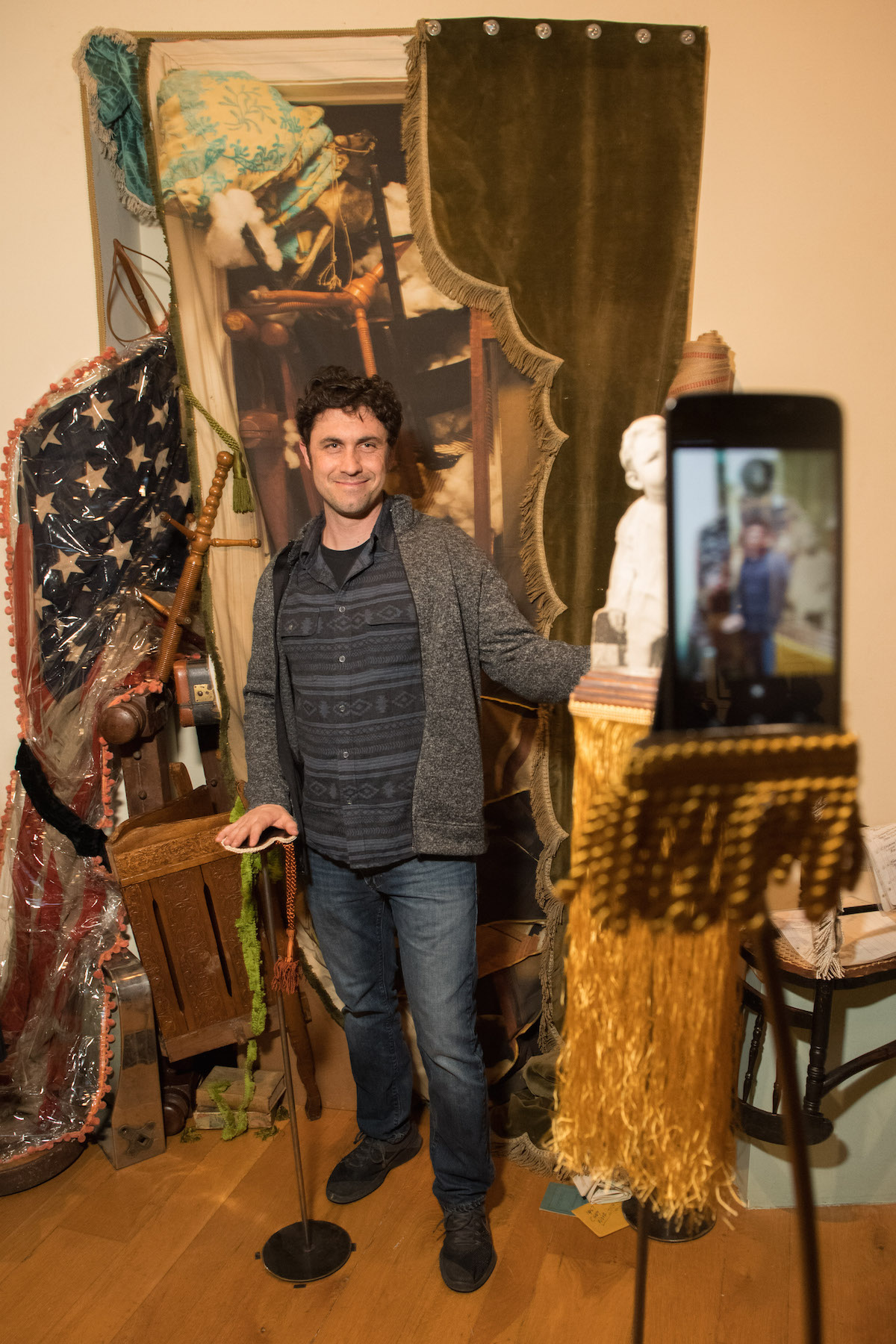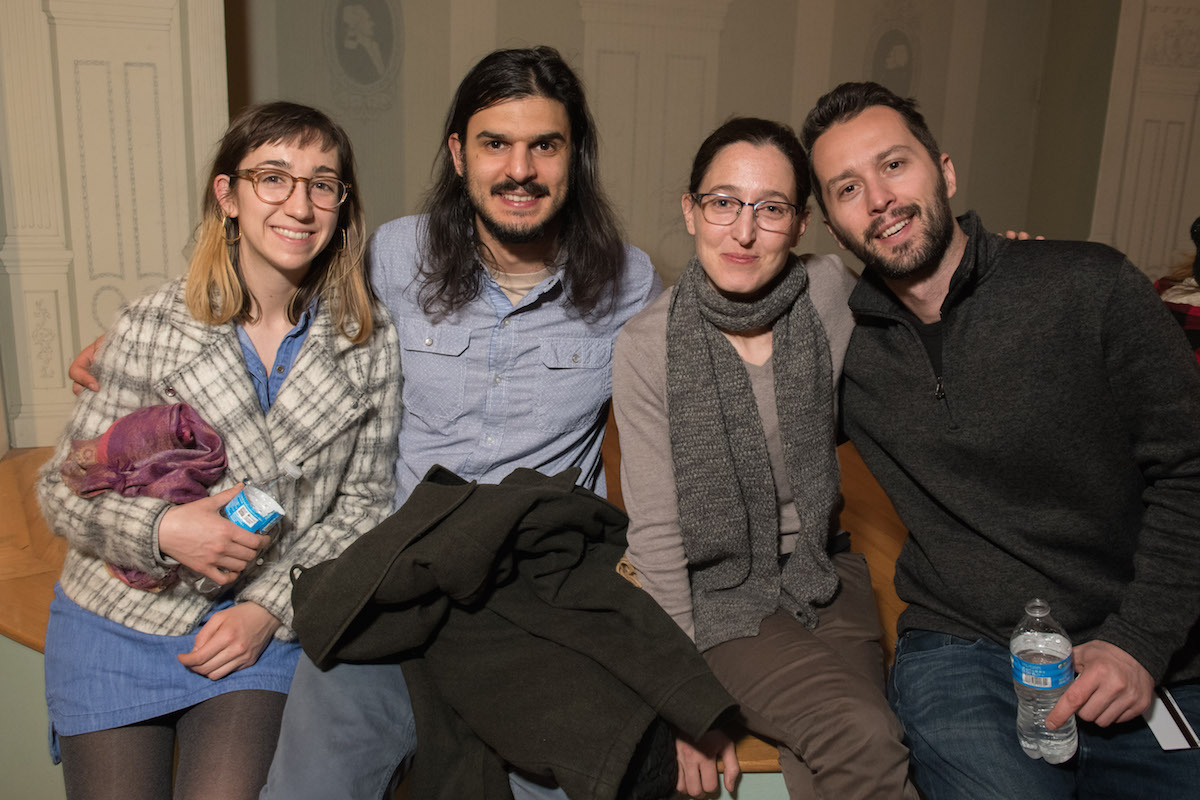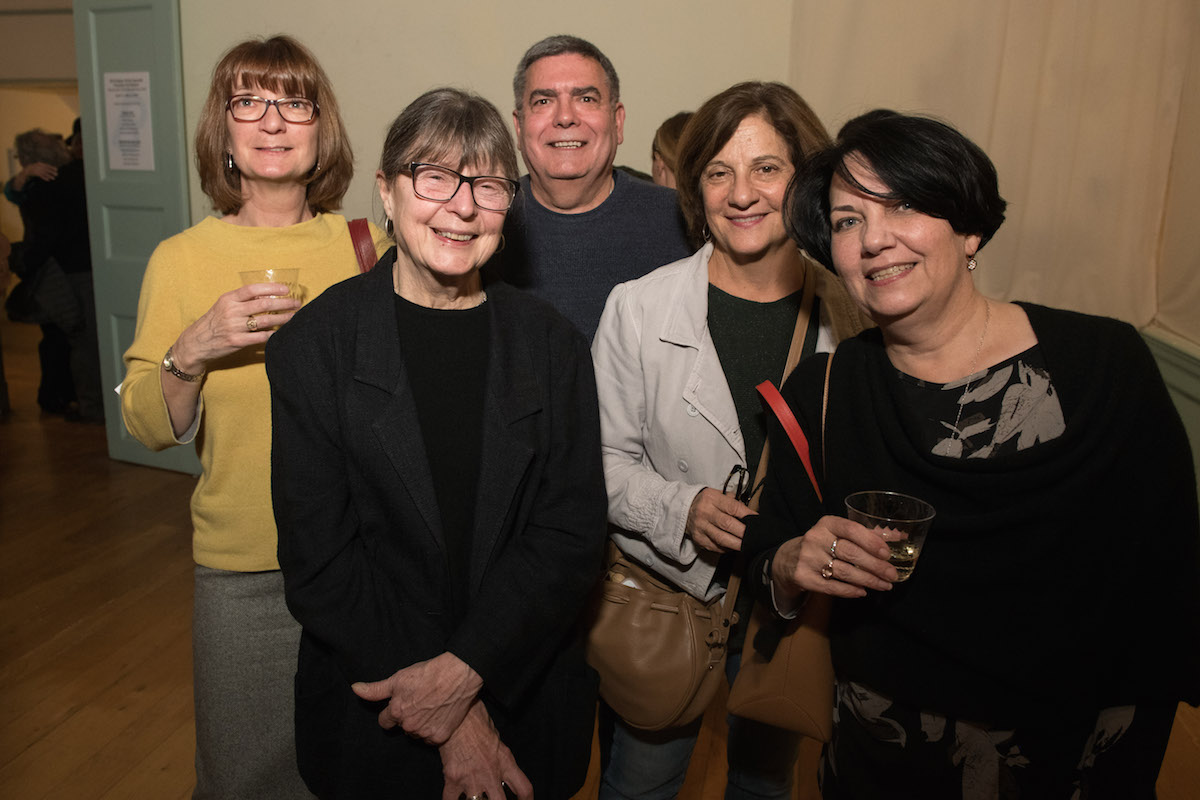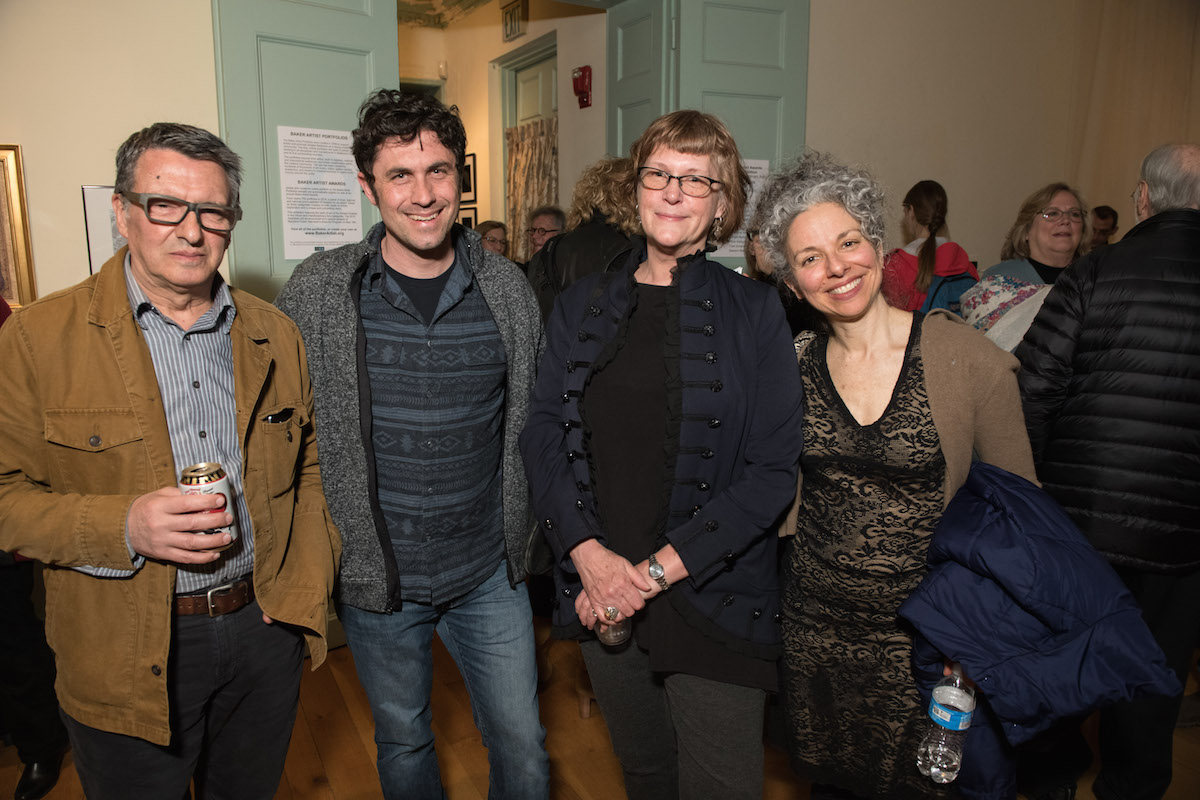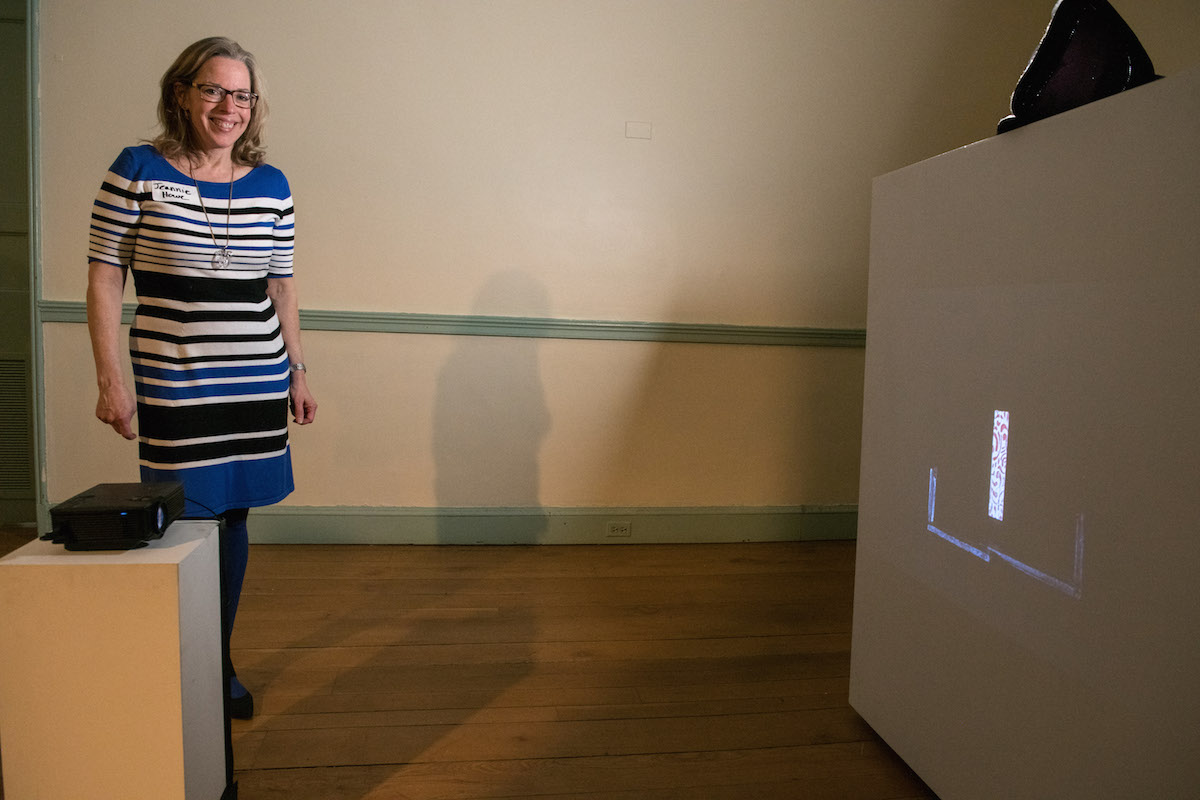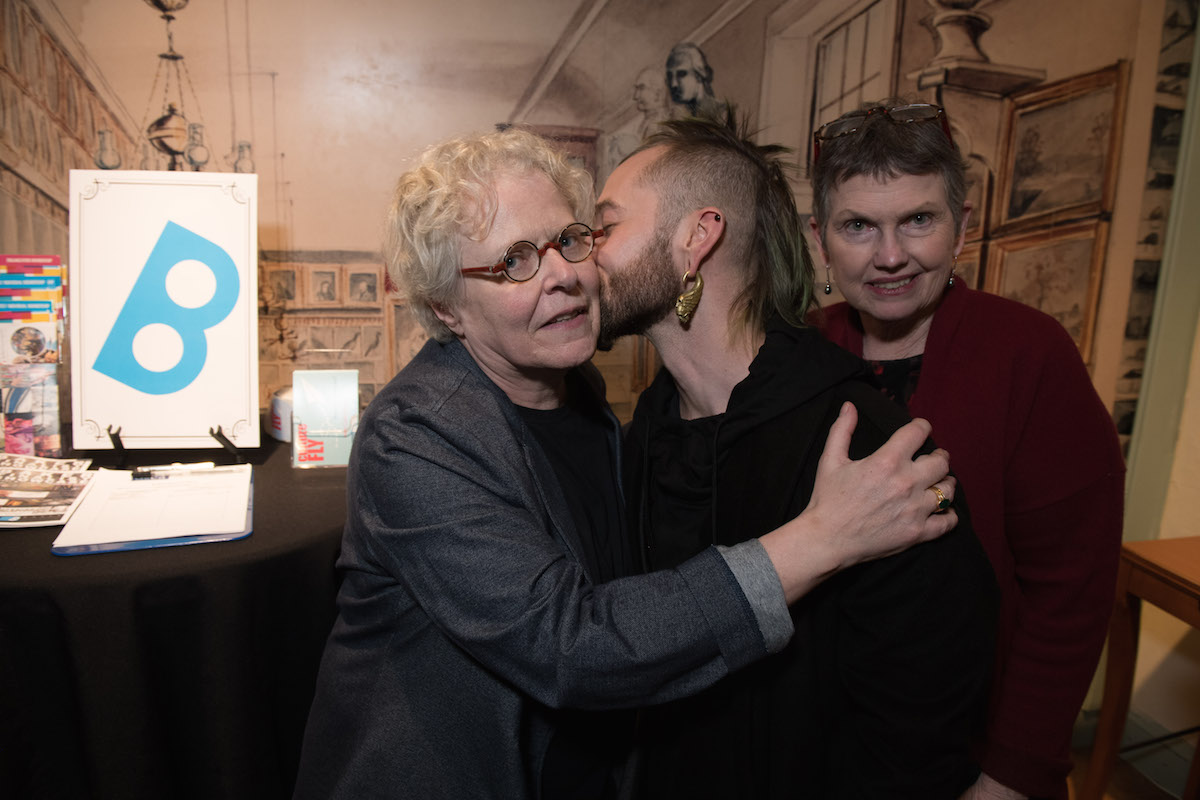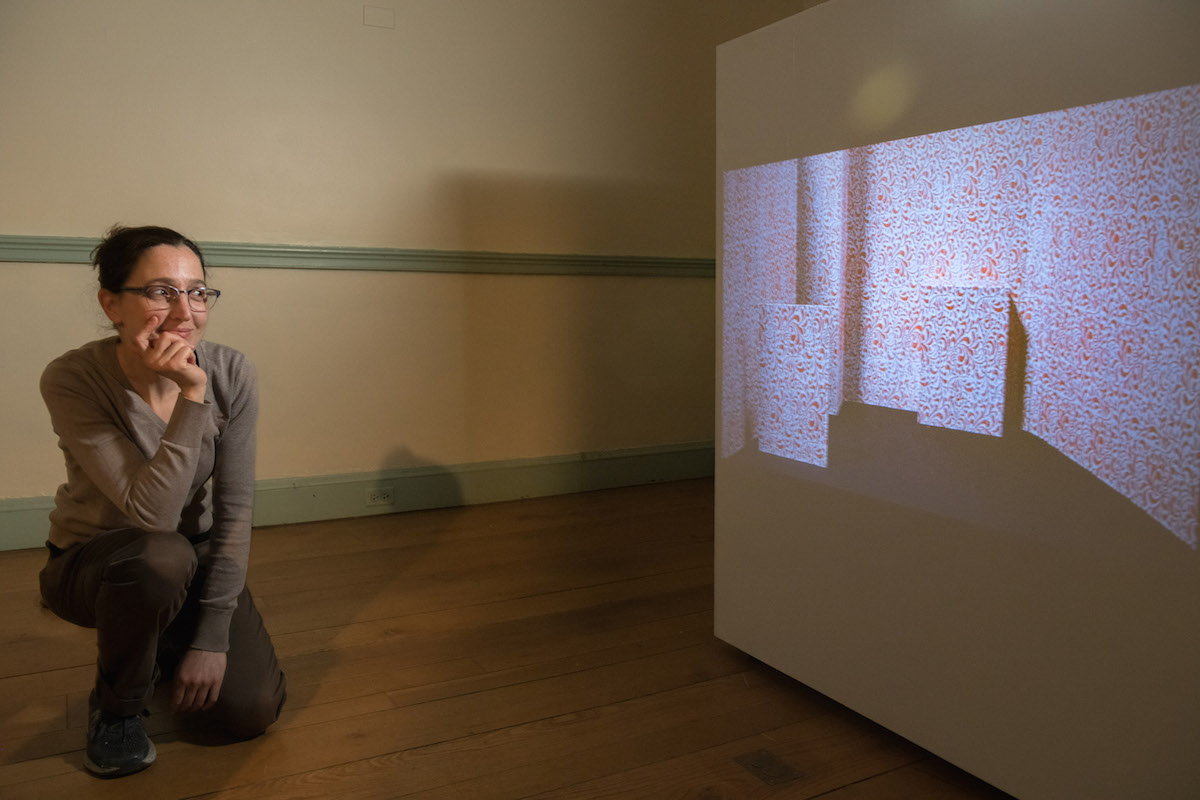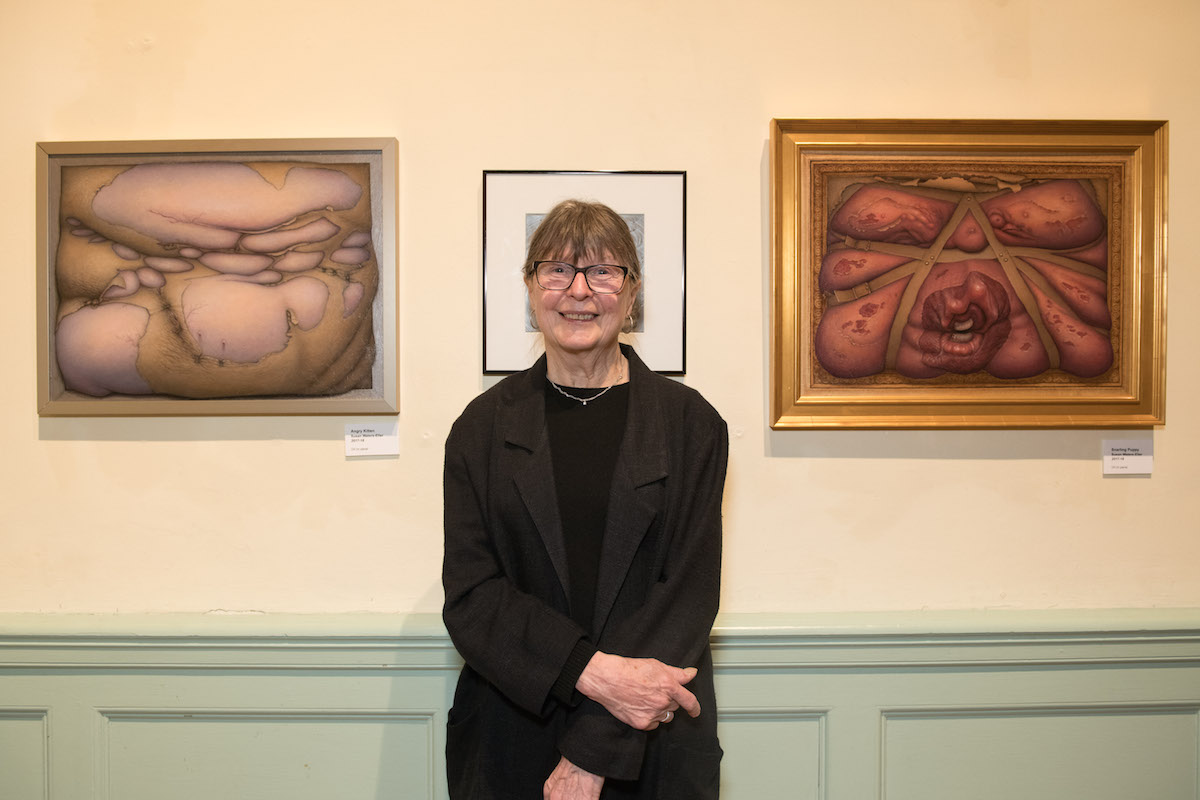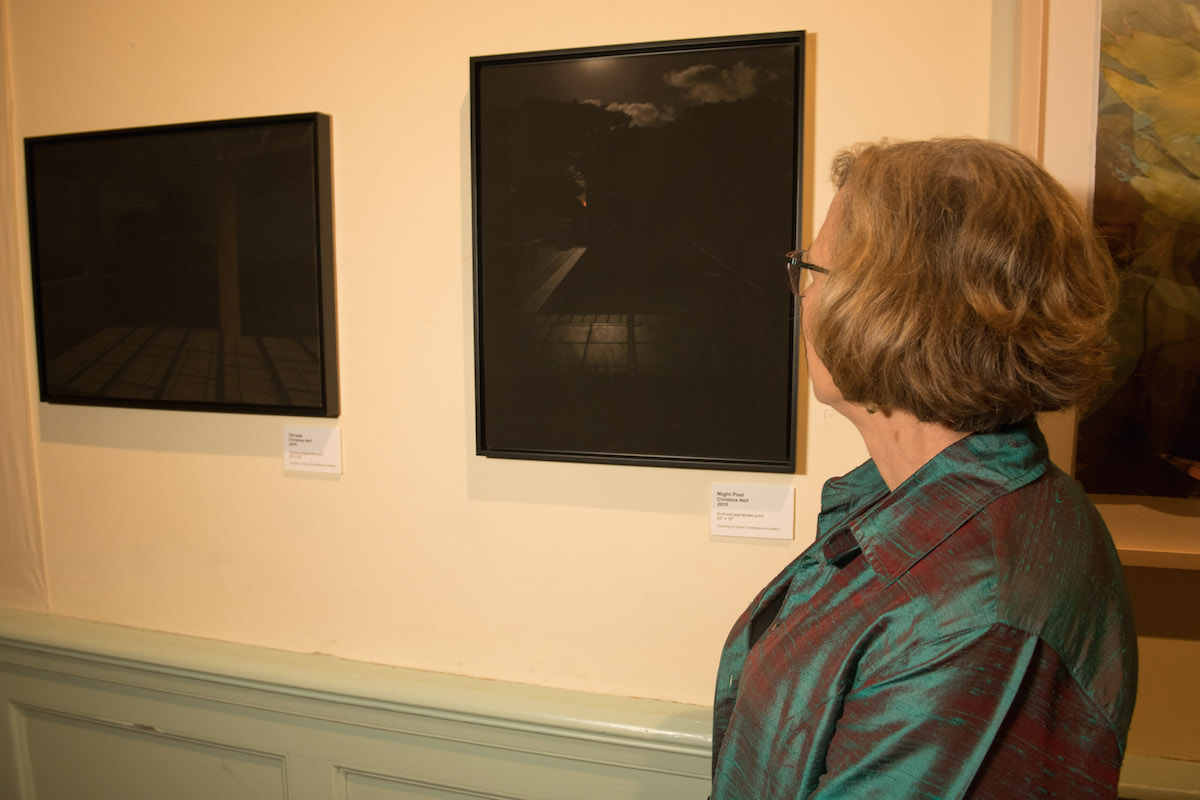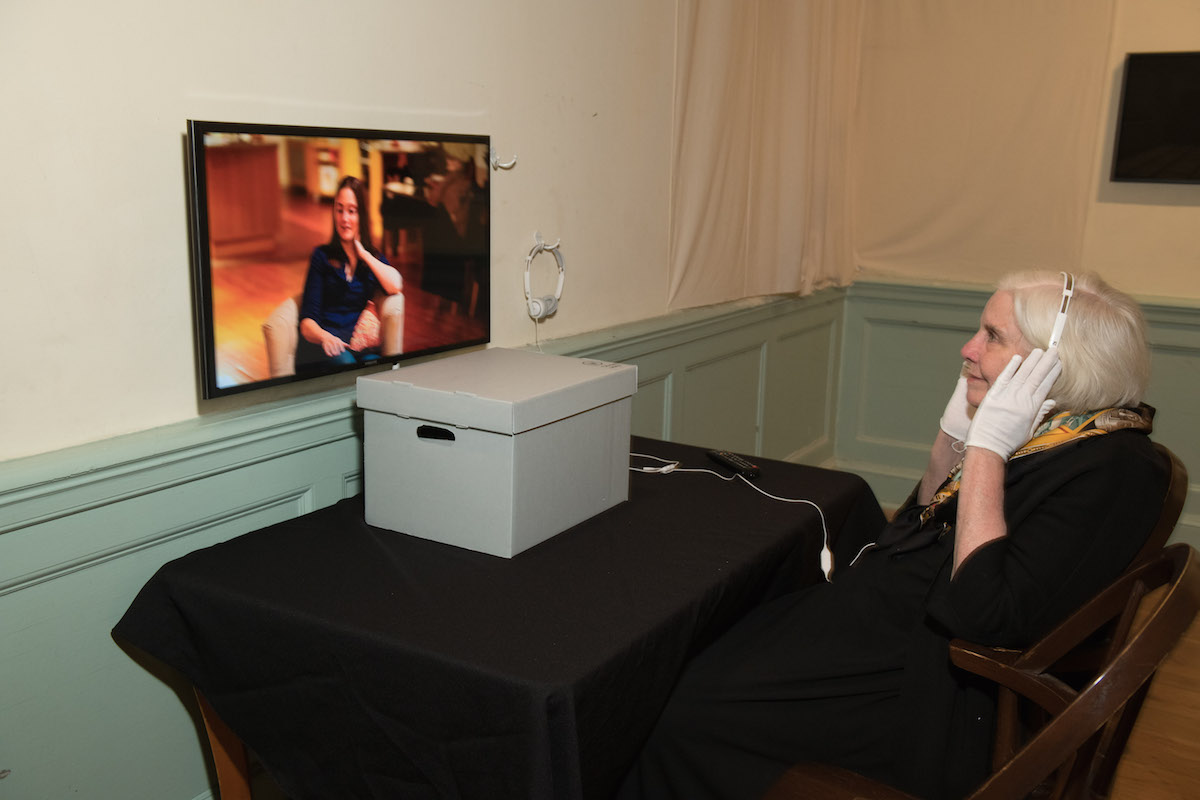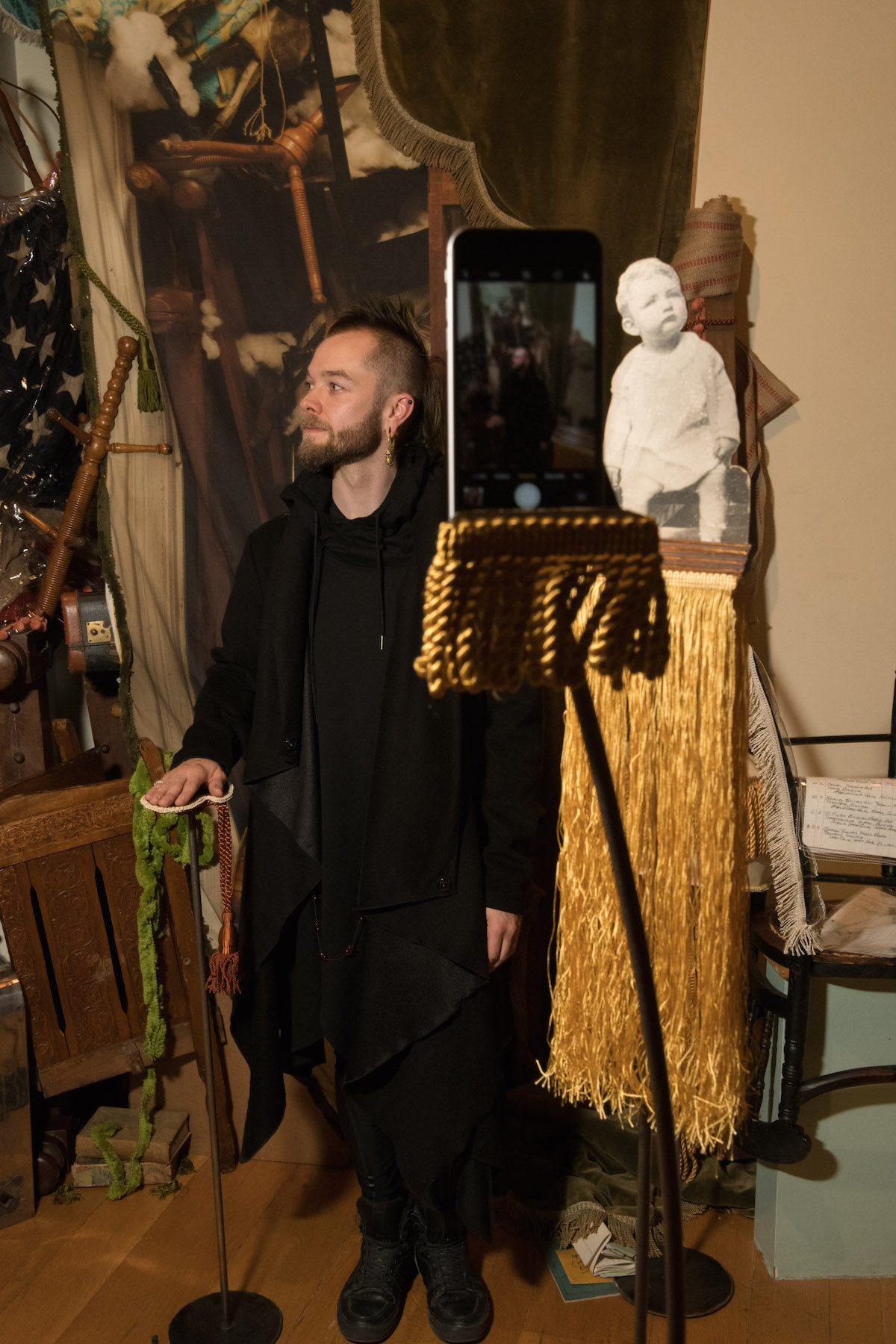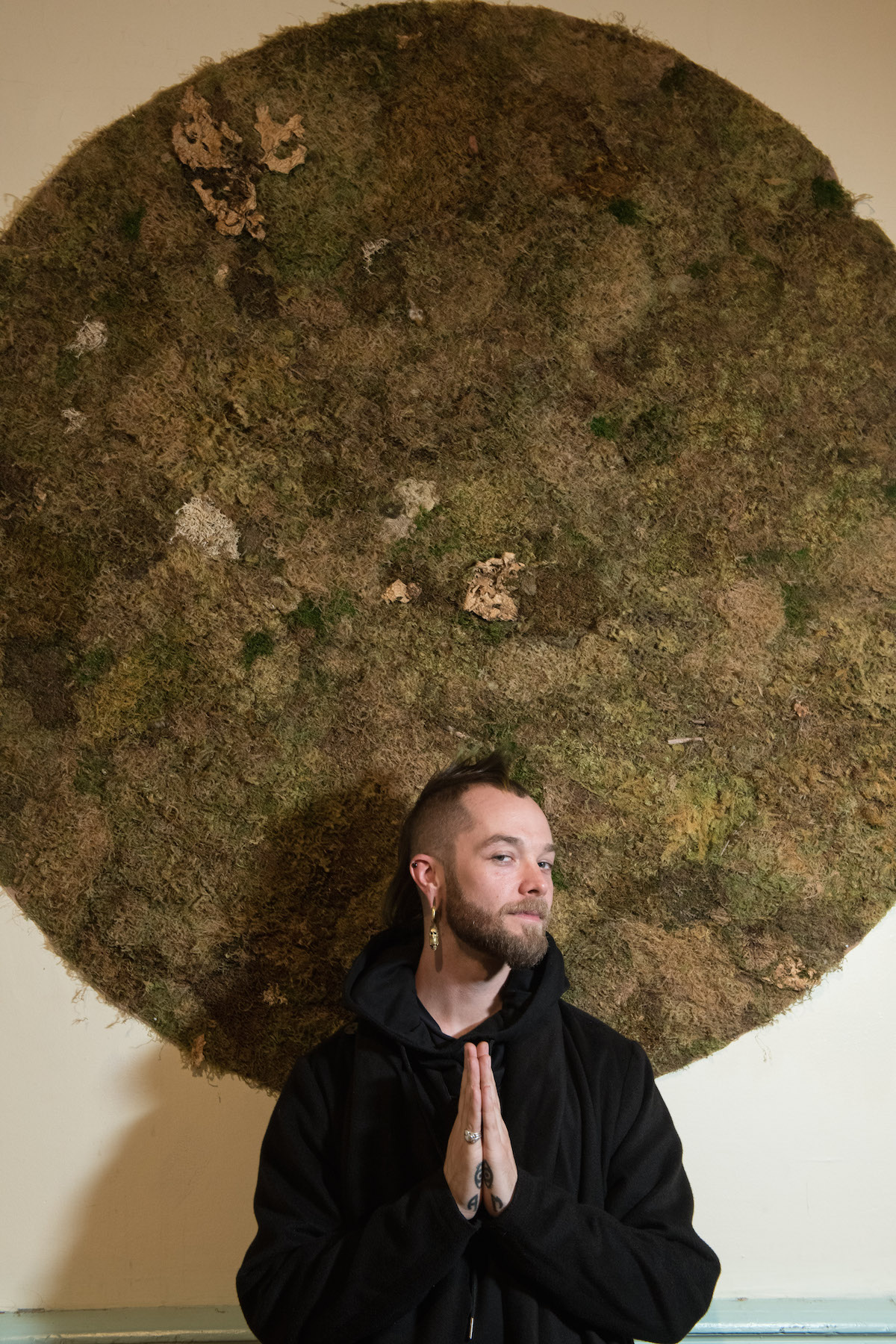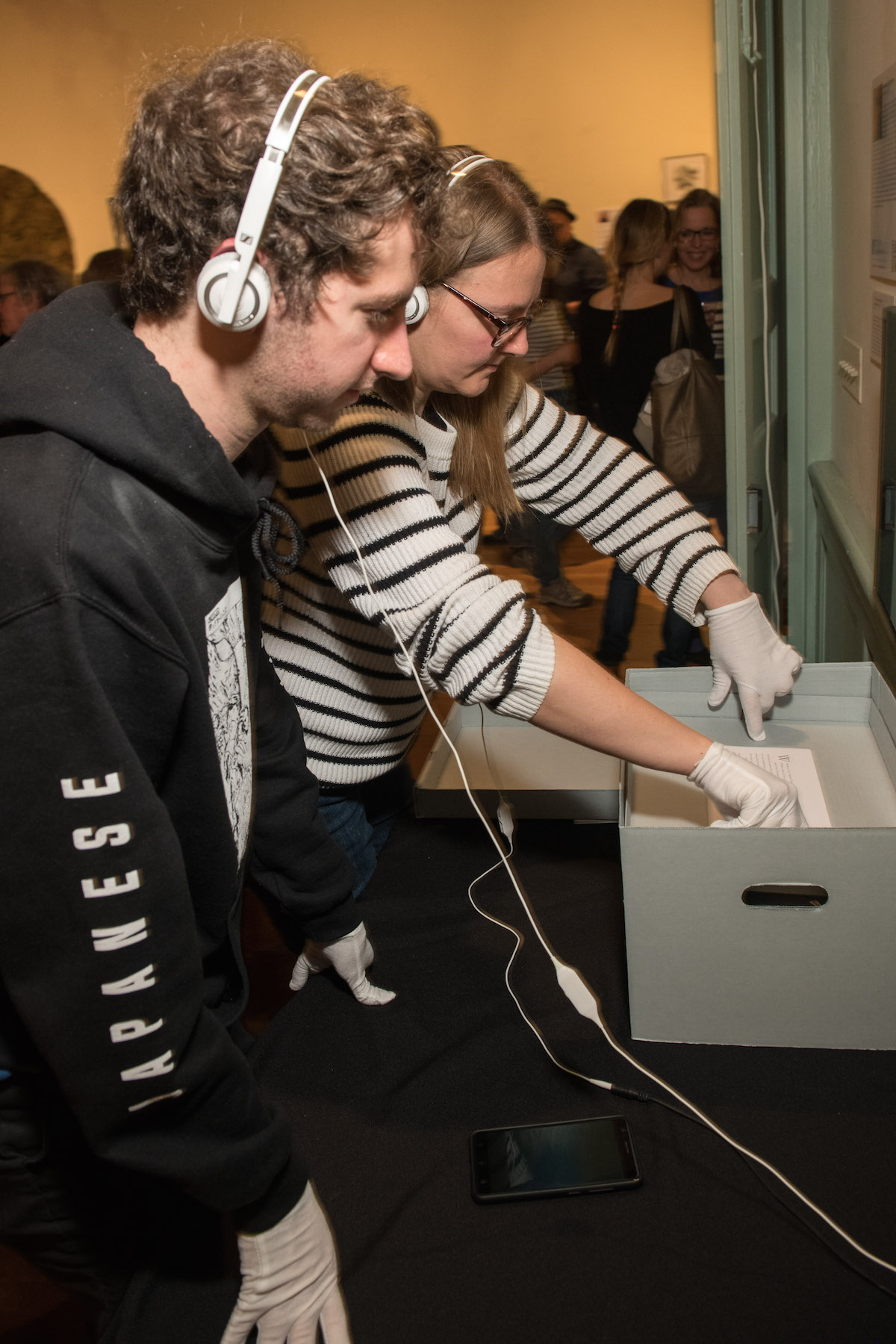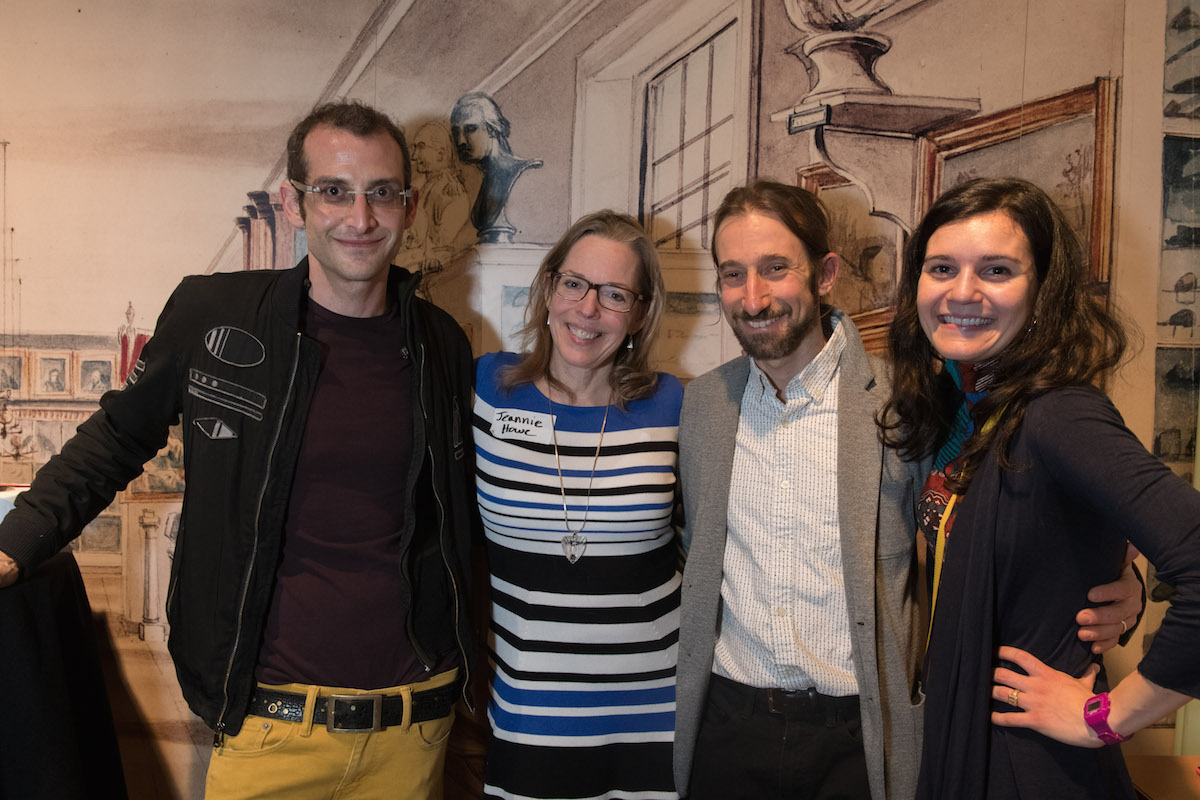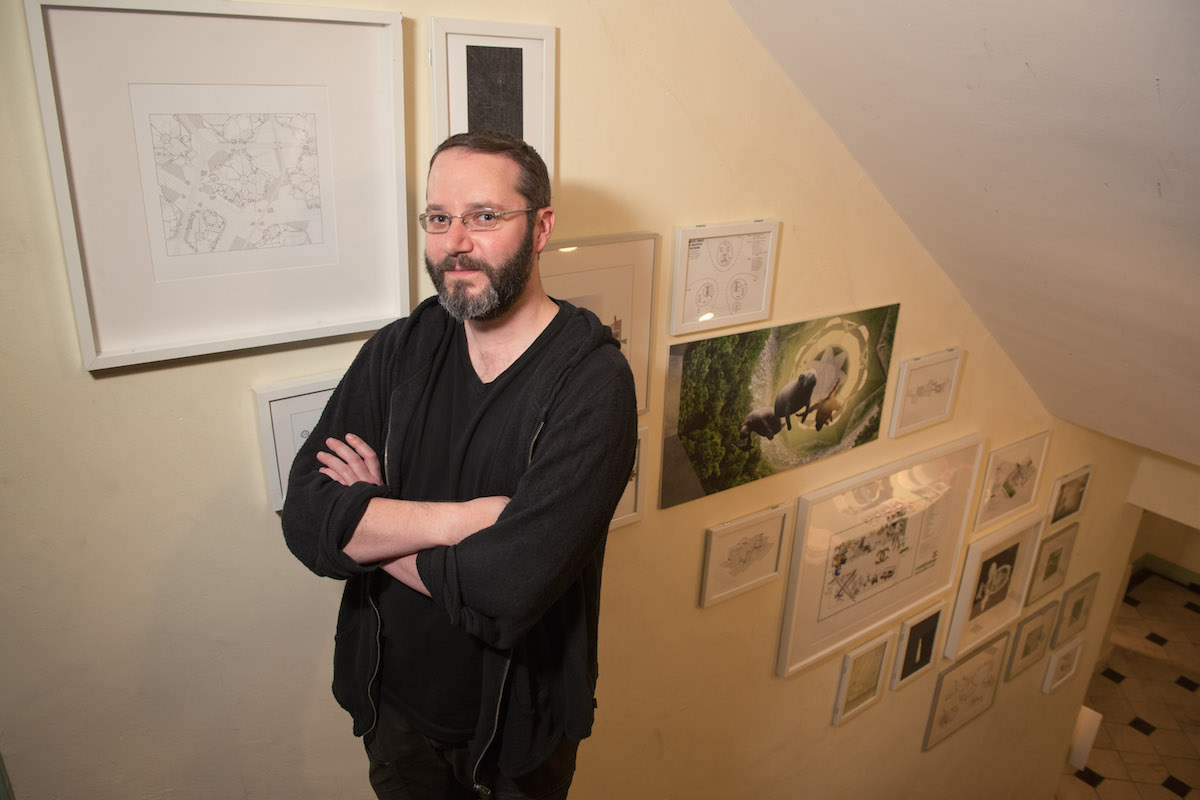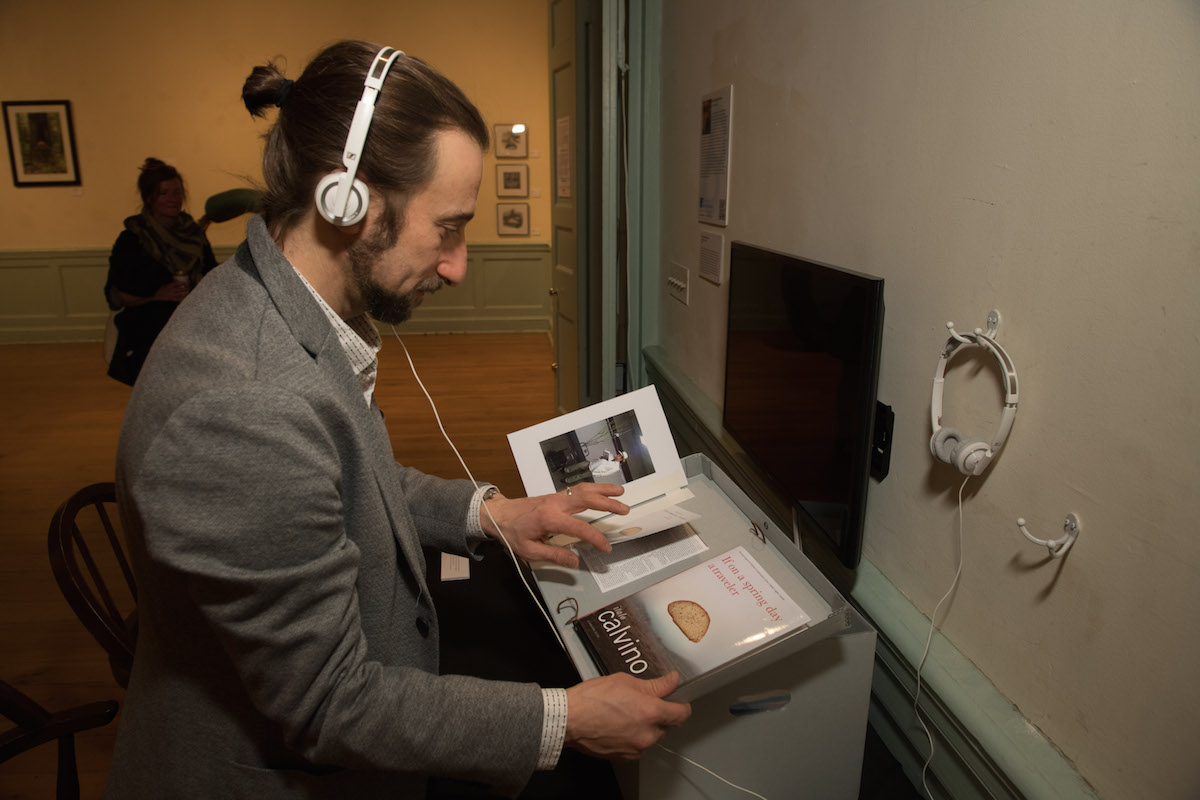Showcase of Baker Finalists at the Peale is Hit or Miss by Amber Eve Anderson
For the first time ever, the Greater Baltimore Cultural Alliance presented a series of Finalist Showcases in conjunction with the 2018 Baker Artist Awards. The first, a Performance Showcase, took place March 14 at the Baltimore Theatre Project and a Literary Showcase was held April 5 at Bird in Hand. Of this year’s total 32 finalists, more than a third fall into the visual and interdisciplinary arts categories. Last week, the third Finalists Showcase opened at the Peale Center where the work of nine artists is on view through May 6.
The exhibition begins on the staircase leading up to the second floor, where framed maps, plans, and digital renderings by Fred Scharmen hang. At the top of the stairs are augmented reality works by Jeffery L. Gangwisch, while the main portion of the exhibition is in a room at the back of the Peale with a raised stage.
Whereas previous uses of this space took the dilapidated state of the building and its history into account, the lack of consideration of the space in this exhibition is glaring. While the crumbling walls and peeling ceiling, soon to be renovated, enhanced the immersive installations of Abigail DeVille’s Only When It’s Dark Enough Can You See the Stars and H.T. Darling’s Incredible Musaeum, in a traditional exhibition context trained to notice stray nails in the wall and poor lighting, the conditions of the building overshadow most of the work.

That said, two highlights are Abraham Burickson’s “The Odyssey Works Box” and Stewart Watson’s “Alas! How few of us are able to accomplish as much as this apparently senseless oyster, which has actually converted a cure into a blessing, and changed a trial into a treasure!”
Watson’s piece is the only work to take the space into consideration, and it does so with appreciable success, where the work and the venue enhance one another. Working with a corner niche, Watson hung a custom designed textile picturing a closet stuffed with objects. Emerging from behind the fabric and spilling out into the space of the gallery are bits of furniture and memorabilia from the artist’s family archive dating back to the 1840s. These personal, historical objects—some covered in thick clear plastic, others accentuated by heavy velvet and gold tassel—set a stage for viewers to enter.

One gold-fringed stand pointing toward the corner is meant to hold a cell phone, allowing viewers to use a timer to take self-portrait. Another stand supports a black-and-white 1932 childhood portrait of “RB Watson” while a third indicates the placement of the viewer’s hand once standing amidst the installation. Beside this is a series of similarly posed sepia-toned portraits, articulating the relationship between antique portraits and modern-day selfies. The interactive piece created an energy amongst the crowd throughout the opening reception, many of whom took their assigned position and posed enmeshed in the work.
Whereas Watson’s work situates the viewer solidly in the physical space of the Peale Center and a more generalized historical context, Burickson’s almost completely removes the viewer from it. “The Odyssey Works Box” is described as a 30-minute “audio/visual/tactile experience” that consists of a video and an archival museum storage box with books, photographs, and ephemera. Viewers are instructed to sit at the table and watch the introductory video that explains Odyssey Works, a performance group co-founded by Burickson in 2002 that creates all-encompassing experiences for one-person audiences.
A few minutes in, the video goes dark, and viewers don white gloves and follow an audio tour through the contents of the gray box. In a way, the audio tour mimics the relationship Burickson has established between himself and viewers, his voice methodically directing the viewer’s actions to perform the unpacking of the work. Sitting at the table amidst the crowd, I didn’t feel as if I could exit until the tour was completely finished, and by the time I got up, one whole wave of people had left the show and another had arrived.

During the audio tour, I kept wondering if Odyssey Works was real or fiction, another parallel between Burickson’s work as Artistic Director of Odyssey Works and his piece at the Peale, as I’m sure many of his singular audiences find themselves wondering about the line between the real and the scripted. The piece fittingly speaks to the breadth and depth of Burickson’s output throughout his lifetime, requiring due attention from the audience. Watson’s piece accomplishes the same, leaving the rest of the show to feel a bit lacking, calling attention to the need for deliberate curation and a knowledgeable installation crew.
Despite the problems in curation, the move toward finalist showcases in aligned venues for the Baker Artist Award categories is a good one. The Peale is a unique and valuable venue for the arts, but in its current state it requires an intentional consideration of its space; without it, the exhibition as a whole feels rushed and haphazard.
The absence of four visual and interdisciplinary artists from this exhibit—Erick Anotonio Benitez, Graham Coreil-Allen, David Page, and Amy Sherald—should be noted; it seems telling that certain significant finalists have made the decision not to participate and adds to the incomplete feeling of this show. It’s unclear whether this was due a lack of time for studio visits or the development of new work, or whether the artists made the decision strategically, based on the needs of their own work in a specific exhibition venue that could not accommodate them. Either way, if the Baker Awards want to present an accurate representation of the quantity and caliber of work represented by this group of finalists, they should use their resources to make the exhibition a priority and ask artists what they need well in advance of an exhibition.
Even with the challenges of the exhibit, there is a lot to be hopeful for. I look forward to a possible screening for the video finalists, and am heartened to see the Baker Artist Awards improving their place in the Baltimore arts scene from year to year, despite their insistence on keeping their jurors a secret and a lack of diversity in their finalists. This year’s series of showcases are a definite improvement over both the 2016 exhibition at the BMA and last year’s winner showcase at Center Stage. Moreover, I was excited to see the plans for the Peale Center’s renovation, already underway, which in addition to gallery spaces also includes a café with seating in the garden.
The 2018 Baker Finalists Showcase is on view at the Peale Center through May 6. Self-guided visits are free, by appointment, on Thursdays, Fridays, and Saturdays from 12-6pm, and Sundays from 10-4pm. Book your visit here.
The 2018 Baker Artist Awardees will be announced May 18 on Maryland Public Television’s Artworks program.
Exhibition photos by Amber Eve Anderson and Reception photos by Theresa Keil, courtesy of GBCA
